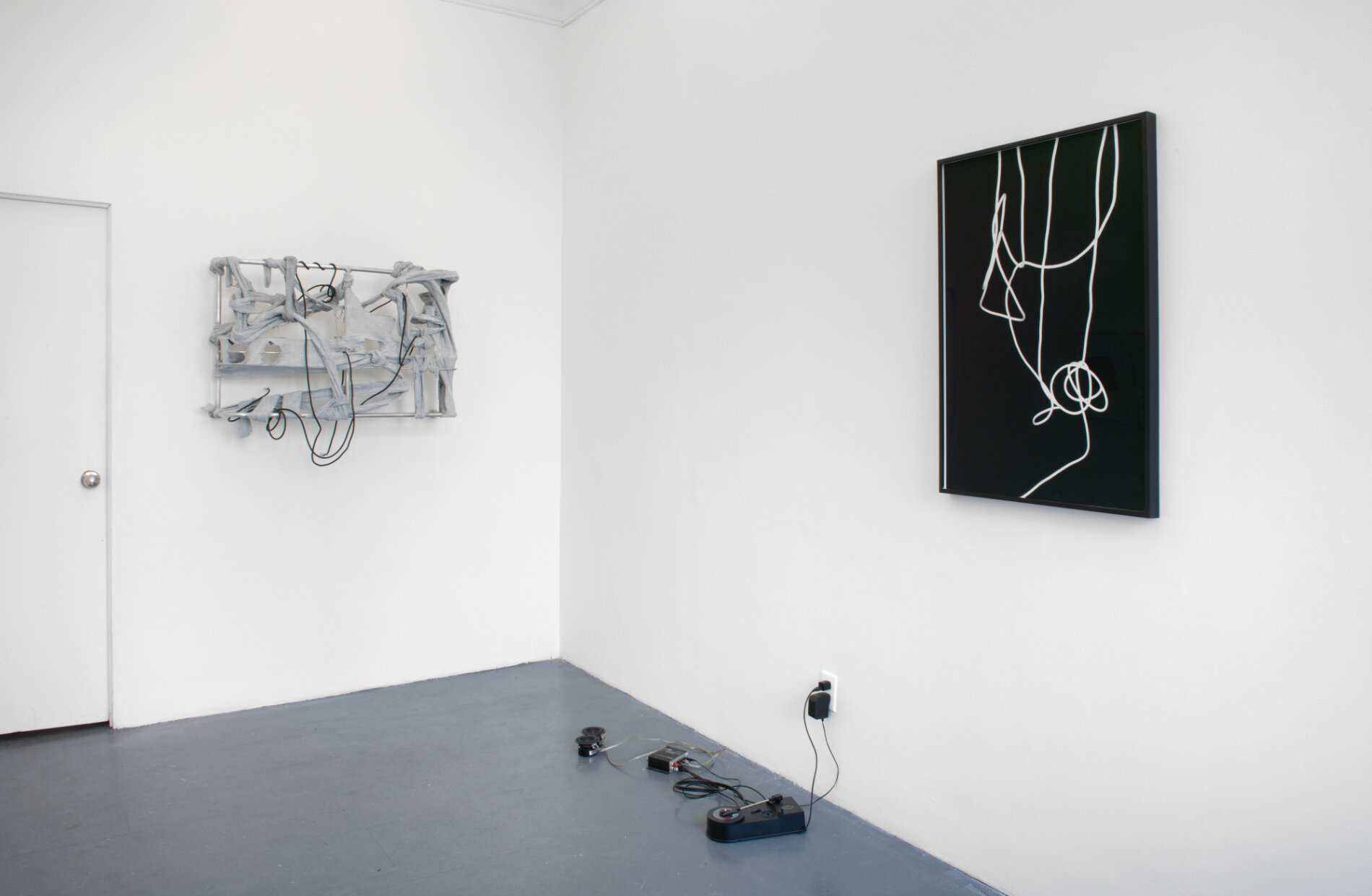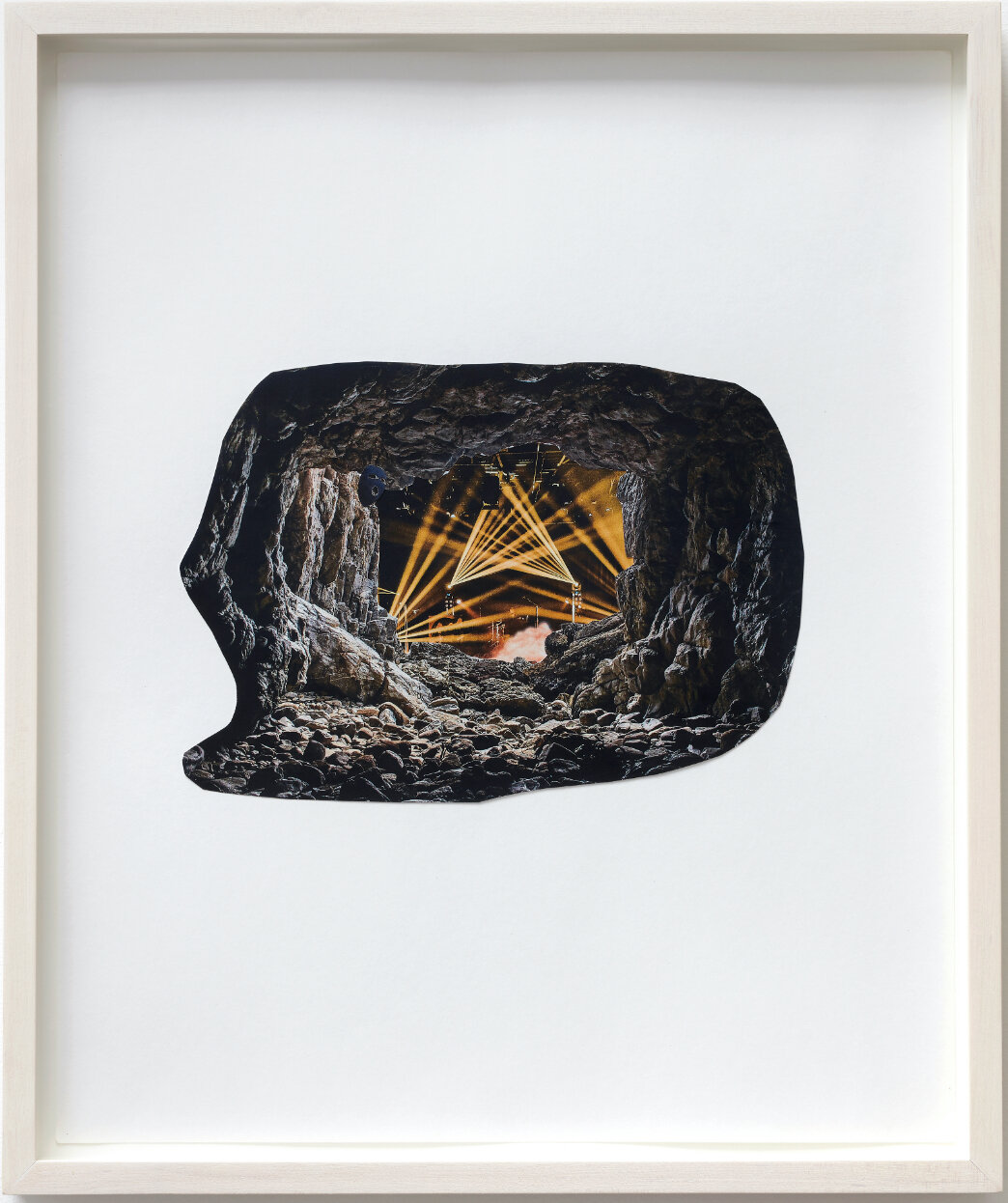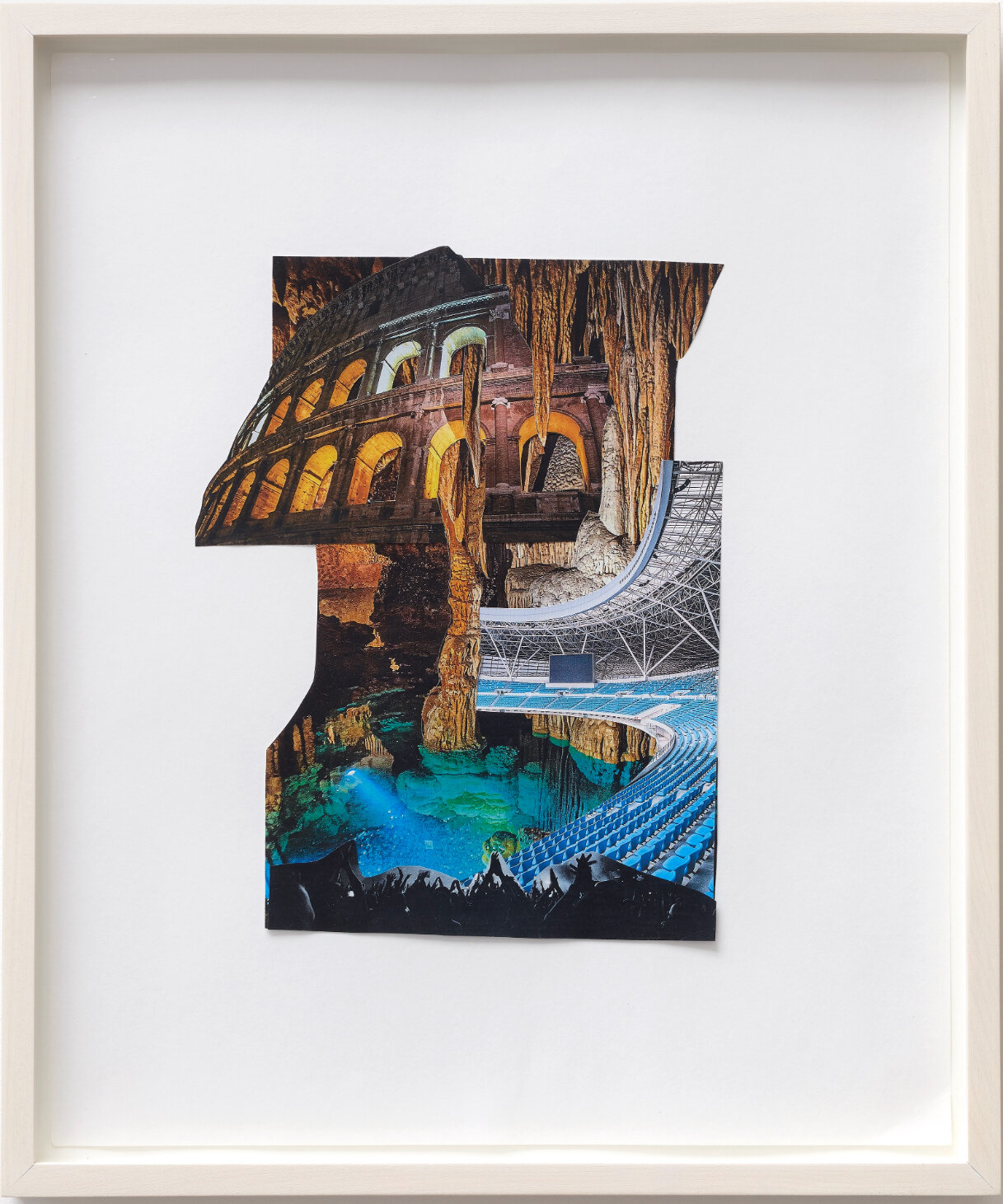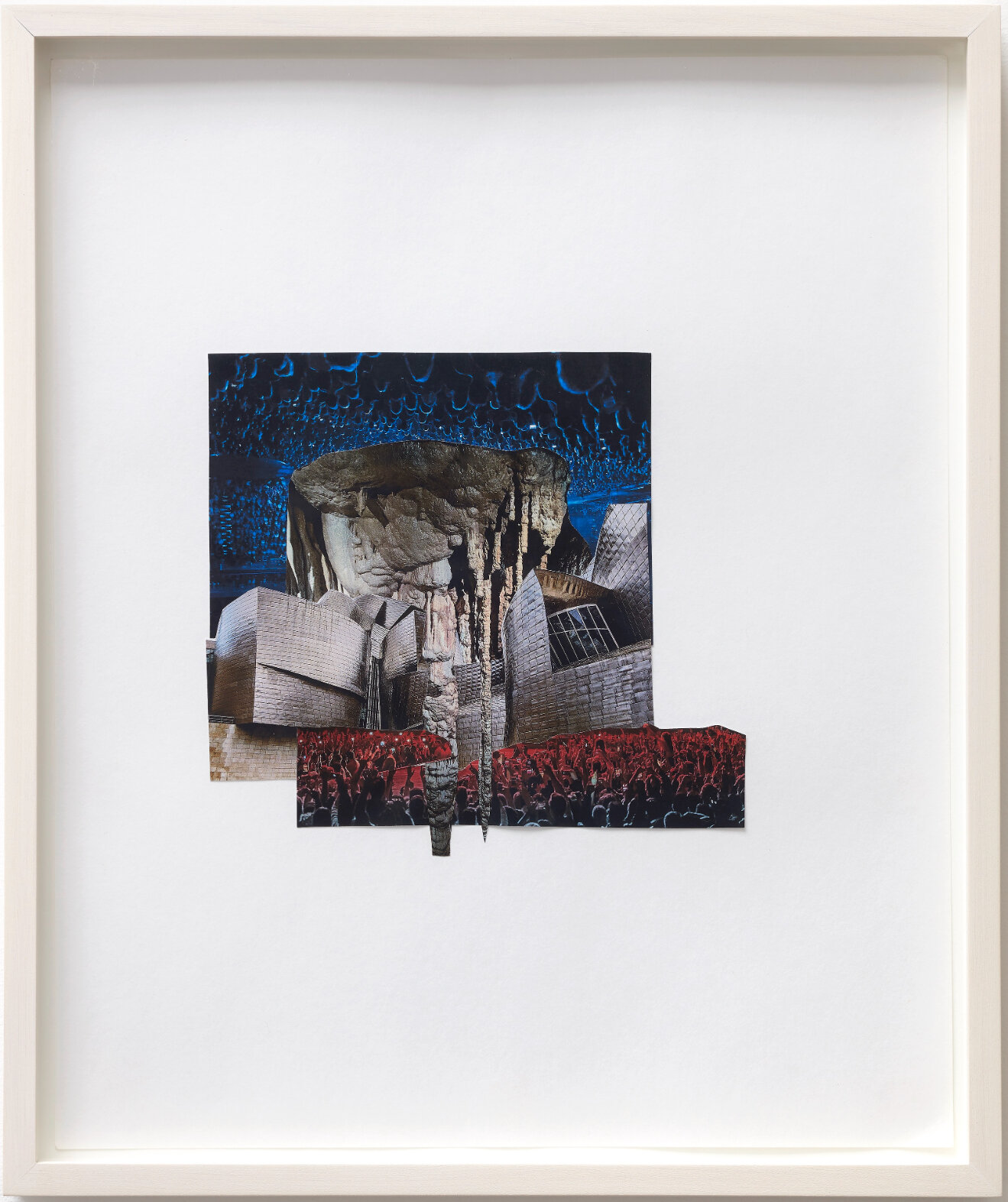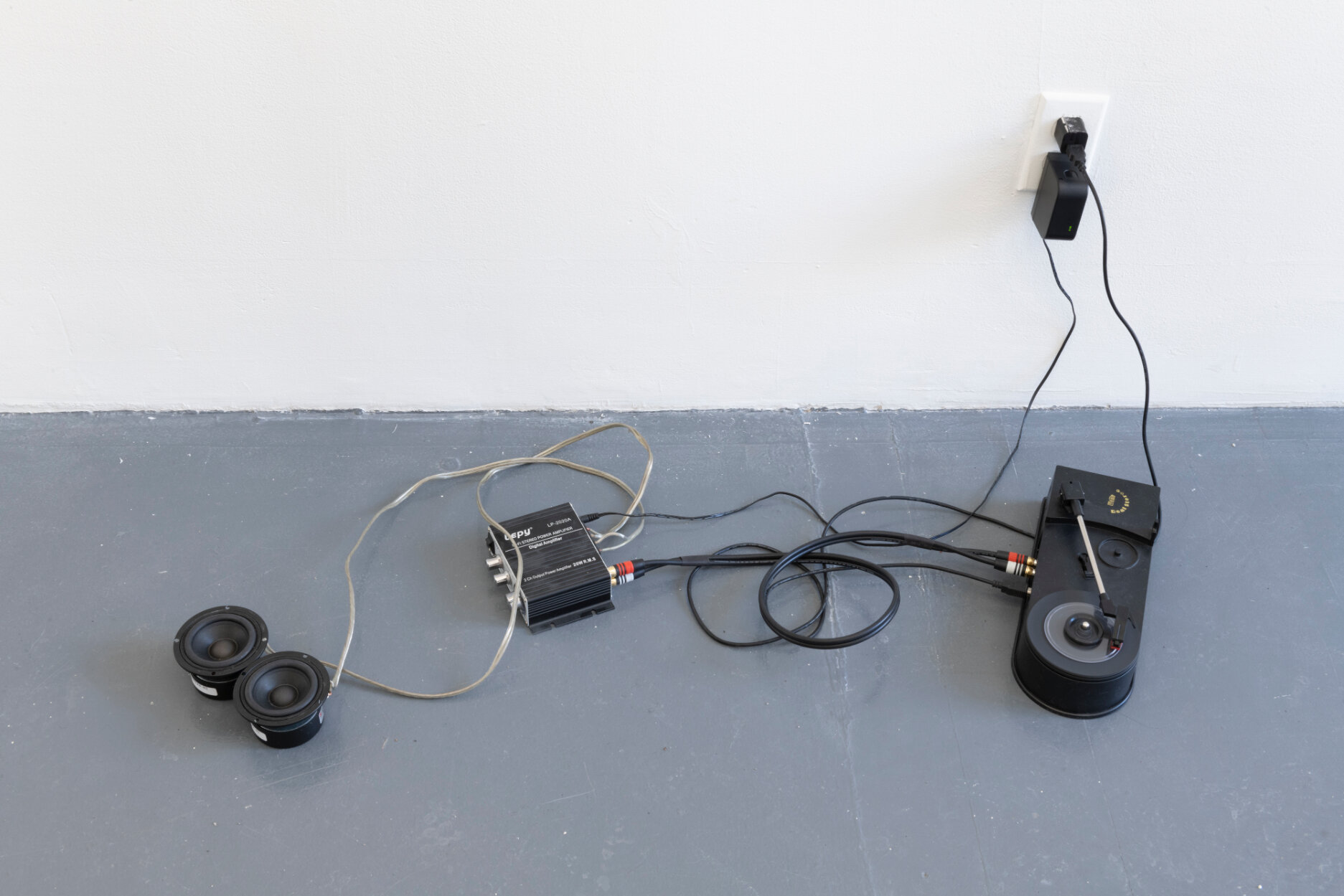“Thank God you’re here” is an exclamation of relief at the presence of another person. This presence offers a sense of safety or comfort—delivery from whatever was occurring before they arrived. The phrase is also a simple instruction: thank God—a body that is both present and absent, a body whose presence is contingent on social agreements that are substantiated through ritual and repetition—that you are here.
The differences in meaning are less important than the situation that is implied: an experience of the presence of others. Each of the works presented in this exhibition is a meditation on the indeterminate boundary between presence and absence, and, in particular, how presence is read in the absence of bodies.
Like lungs, caves are hollow spaces within solid forms. They delineate—and facilitate exchanges—between inside and outside, whether by providing people with shelters or forums for sharing information. Caves are the ancestral homes of homo sapiens. In caves, we began to tell stories to one another with sounds and images—around fires, surrounded by walls inscribed with records of our experiences. (In a cave in Indonesia, archaeologists recently discovered a life-size painting of a wild pig that was made 45,500 years ago, making it the oldest known cave drawing.) Just as caves were spaces in which domestic, social, and theatrical life coalesced, COLLAPSE I–IV, a series of collages, compresses images of caves onto those of coliseums, arenas, and other types of performance venues. The formal gesture of collapsing these images into a single plane allows the prehistoric to haunt the present. The erasure of the distinctions between the contemporary categories of domestic, social, and theatrical throws into relief the discursive relationship between them.
Thank God You’re Here is on view through March 22 at 56 Henry Street New York


